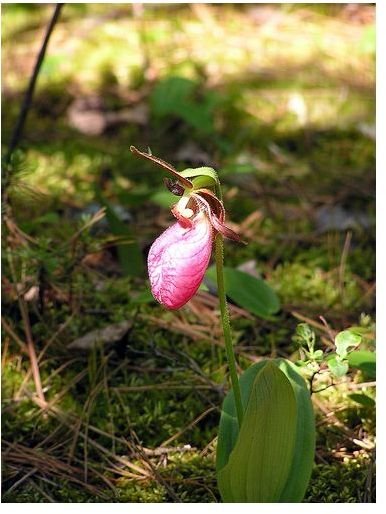Lady's Slipper Herb: An Herbal Nervine Tonic That Is Safe and Effective
A Brief History
Lady’s slipper is a perennial herb in the orchid family. Indigenous to North America, this wild orchid once grew throughout the woodlands and grasslands of the United States and Canada, its yellow and purple-brown petals were the sign of one of nature’s powerful, yet nurturing sedative plants.
Its roots were used in Native American medicine as a nervine tonic, as well as a treatment for pain and even to induce the dream state. When the European settlers came to North America they integrated the lady’s slipper herb into their own healing repertoires. Up until the 1800’s it was used to treat hysteria, irritability, headaches, insomnia, epilepsy, and even restlessness in children. Unfortunately, lady’s slipper was used so much that it became more and more difficult to find in the wild. Today, it is a rare occasion to stumble upon this powerful flower, and even then, it should not be picked. This plant is considered to be an endangered species in the United States, and is a protected plant in the United Kingdom. Today the herb is cultivated in Eastern Europe.
Yellow lady’s slipper, Cypridedium pubescens, is the preferred medicinal plant, although pink lady’s slipper is sometimes used as a substitute. One petal of lady’s slipper folds into a soft, delicate pouch, resembling a slipper. It has also been called the moccasin flower, nerve root, virgin’s shoe, and bleeding heart. As a comparable herb to valerian, the more widely used nervine tonic of European herbalists, lady’s slipper has been called American valerian as well.
Using as a Nervine Tonic and for Healing
The primary benefits of the lady’s slipper herb have to do with easing tension and relaxing nerves. Like other nervine plants, it nourishes and reinforces the nervous system, making it a generalized treatment for conditions which many people face — stress, anxiety, nervousness, tension, insomnia, and even depression. It is important to deal with these common psychological disorders not only for our mental health, but for our physical well-being as well. When left unattended, they can lead to headaches, digestion issues and skin problems, and over time, ailments of the nervous system can manifest as serious disease.
With its specific combination of volatile oils, glucosides, resin, tannins, and b-complex vitamins, lady’s slipper offers a natural remedy to nerve disorders. On its own, this herb is very effective for cases of insomnia and restlessness. It blends well with other nervine herbs, such as skullcap, oats, and valerian, for stress, depression, and anxiety.
This herb has other medicinal properties aside from treating the nervous system. It is also an antispasmodic, making it useful for cramps and muscle spasms. As a diaphoretic, this herb encourages the elimination of toxins through sweating, and cools the body during a fever.
Because of its scarcity, lady’s slipper is not the most popular nervine tonic, despite its value. It is available in tincture or a powdered capsule form, but tends to be expensive. The dried root can be found in local herb shops as well. To make a tea from this herb, infuse up to two teaspoons in one cup of boiling water; let steep for ten minutes.
In high doses the lady’s slipper herb can act as a mild hypnotic; it should not be taken along with medications, or alcohol. Pregnant and nursing mothers should avoid it altogether.
Sources:
Hoffmann, David. “The Complete Illustrated Holistic Herbal: A Safe and Practical Guide to Making and Using Herbal Remedies.” (Element Books, 1996).
photo credit: Deacon Steve
Please read this disclaimer regarding the information contained within this article.
